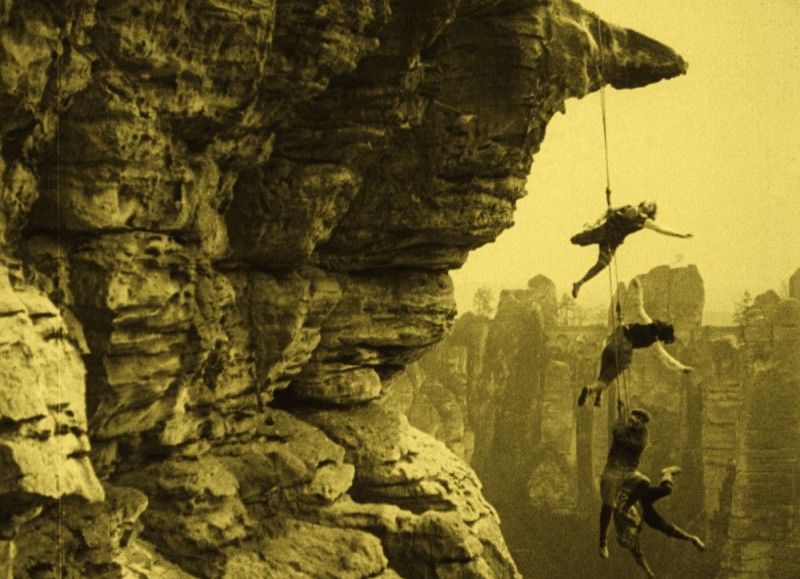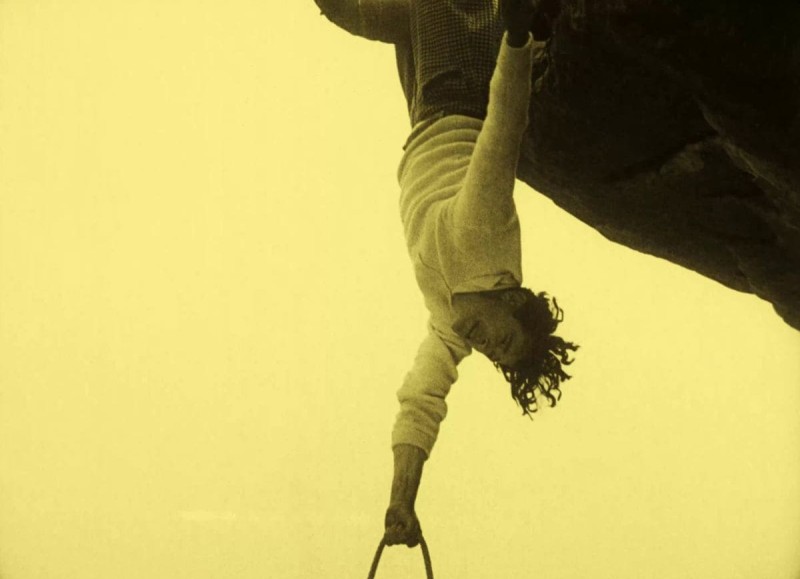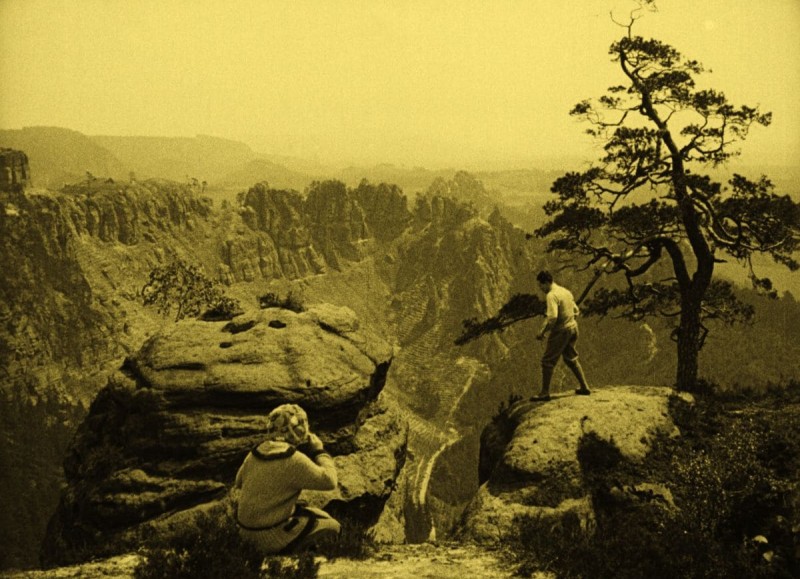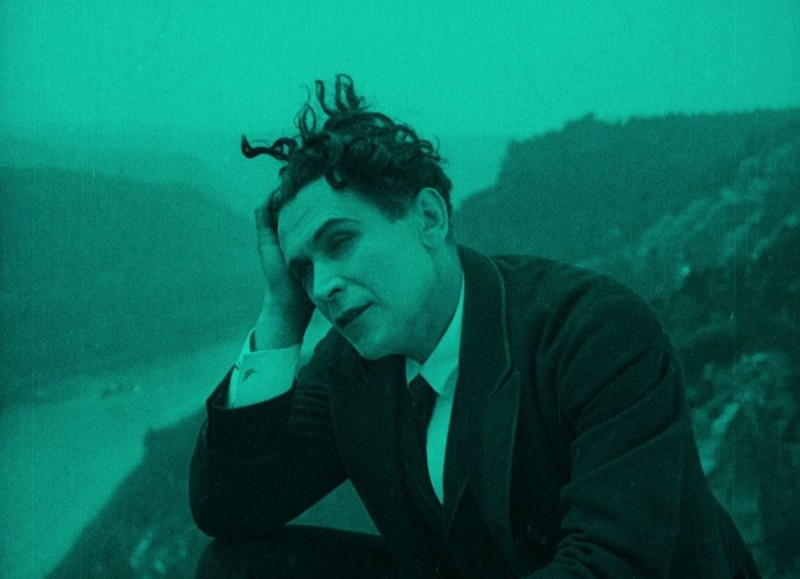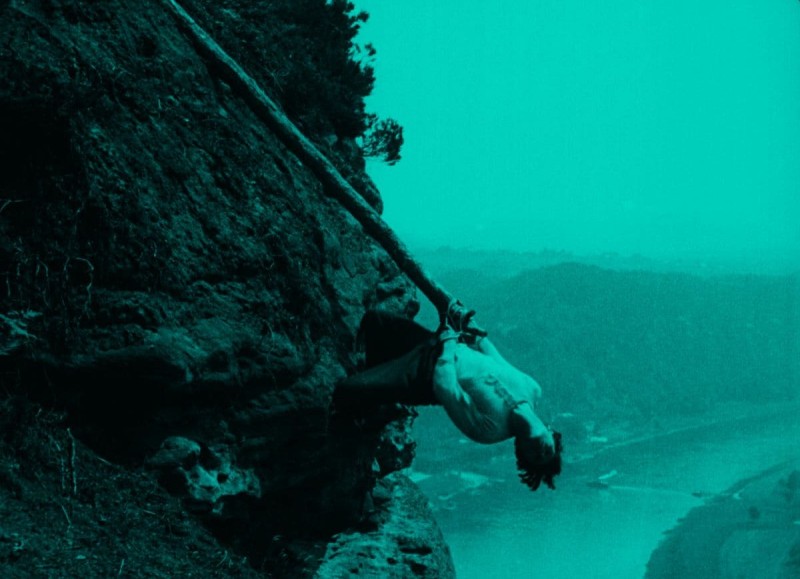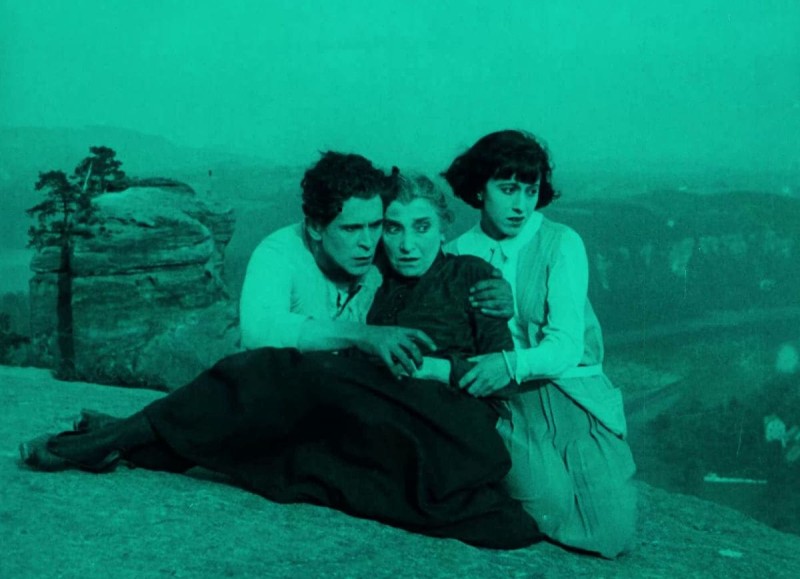Filmkonservierung
Mister Radio
Albertini spielt Gaston de Montfort, einen Erfinder, der zurückgezogen in den Bergen lebt und von den Einheimischen wegen seiner bahnbrechenden Arbeit mit Radiowellen den Spitznamen "Mister Radio" erhalten hat. Gaston wurde von seiner Mutter zu dieser hermetischen Lebensweise gezwungen, um ihren Sohn vor der Wahrheit über den Tod seines Vaters zu verschonen. Die Ankunft des Bankiers Joe Swalzen bringt Gaston zurück in Kontakt mit der Zivilisation – und mit der Vergangenheit seines Vaters. (O.H.)
2015 Sicherung auf Grundlage einer viragierten und getonten 35mm-Nitrokopie (1699m, ca. 78 min bei 19 B/Sek). Kopierarbeiten: L'Immagine Ritrovata (Bologna)
2021 Digitale Restaurierung in 4K durchgeführt von DFF – Deutsches Filminstitut & Filmmuseum auf Grund der 35mm-Nitrokopie, die sich in der Sammlung des Österreichischen Filmmuseums befindet. Kopierarbeiten: ARRI Media (München)
Mister Radio entstand 1924 unter der Regie von Nunzio Malasomma, mit Sensationsfilmstar Luciano Albertini in der Hauptrolle. Für Malasomma war es die erste Regiearbeit in Deutschland nach seiner Emigration aus Italien. Für Albertini war es der erste Dreh nach einem Abstecher in die USA, zur Universal Pictures. Die Außenaufnahmen des von der Phoebus-Film A.G. produzierten Sensationsfilms fanden an Schauplätzen im Elbsandsteingebirge bei Rathen statt, im Frühjahr 1924.
Am 7. August 1924 erteilte die Film-Prüfstelle Berlin dem Film mit einer Länge von 1902m die Zulassung, eingeschränkt durch "Jugendverbot". Die Uraufführung folgte am 5. September anlässlich der Neueröffnung des Bafag-Theaters am Ku'damm.
Von Mister Radio blieb einzig eine zeitgenössische Kinokopie aus österreichischem Vertrieb erhalten. Sie wird seit 1983 im Österreichischen Filmmuseum bewahrt, Teil einer Sammlung von Filmkopien des Verleihers "Waldmüllers Alpenländische Filmzentrale, Innsbruck". Das Nitrozellulose-Original ist viragiert, weitgehend vollständig und in gutem Erhaltungszustand, mutmaßlich in ursprünglicher Schnittfolge. In der 1699m langen Filmkopie sind 98 Titel erhalten, überwiegend in originaler Gestaltung. Sie entsprechen in Wortlaut und Abfolge der im Bundesarchiv bewahrten deutschen Zulassungskarte. Der Haupttitel, ein Vorspanntitel und 5 Zwischentitel fehlen. Ebenso sind 9 oder 10 Anfangs- und Aktenende-Titel nicht mehr original, sondern wurden durch Titel aus anderen Kopien ersetzt.
Die digitale Restaurierung durch das DFF – Deutsches Filminstitut & Filmmuseum erfolgte 2020/21 in 4K Auflösung. Ziel der Bearbeitung war die möglichst originalgetreue Übertragung von Wilhelm Waldmüllers Nitrokopie ins Digitale. Alle Titel wurden übernommen wie vorgefunden, zu kurz stehende Titel gelängt, und die 7 verschollenen Titel ind er Schrifttype Berhard Kursiv rekonstruiert und entsprechend markiert. Die restaurierte Fassung von Mister Radio entspricht mit 90.401 Einzelbildern einer Länge von 1715m gegenüber ursprünglich 1902m. Von der Gesamtspieldauer, ehemals 83 Minuten bei einer Laufgeschwindkeit von 20 B/Sek, erreicht sie 76 Minuten. (DFF – Deutsches Filminstitut & Filmmuseum)
Der folgende Text wurde erstmals im Begleitkatalog zur 34. Ausgabe der Giornate del Cinema Muto, Pordenone (Italien), Oktober 2015, veröffentlicht.
1923 marked the beginning of Luciano Albertini's peak period. Already by this point he was a well established star in Germany, who, in addition to his film credits, had just been made the hero of a series of pulp novels published by genre-specialists Werner-Dietsch-Verlag in Leipzig (Carlo Aldini would be similarly honored the following year, with the publication of the first issue of Carlo Aldini, der tollkühne Abenteurer).
That same year, upon the invitation of Universal Pictures boss Carl Laemmle, Albertini ventured to Hollywood to star in the 15-part serial The Iron Man, directed by Jay Merchant. Although the subject of much hype (Picture Play Magazine even commented that Albertini already had plans to become a U.S. citizen!), Albertini's Hollywood career was short-lived. In March 1924, some three months before the first episode of The Iron Man had even reached cinema screens, the trade papers were announcing that Albertini was to return to Germany within the month, where he would star in four films to be produced by the company Phoebus-Film.
In a suitably grandiose gesture, Phoebus sent two airplanes to greet the returning star as he arrived in the port of Bremen aboard the S.S. George Washington. One of the planes was equipped with a film camera to capture footage of the ship from the air. In an event worthy of one of Albertini's own films, the plane carrying the camera crashed upon landing (thankfully there were no casualties).
Phoebus subsequently incorporated the footage into the one-reel publicity film Die Ankunft Luciano Albertinis in Deutschland (Luciano Albertini's Arrival in Germany), which was passed by the Berlin film censor's office on 25 March 1924. Today the film is believed to be lost.
Mister Radio was the first of the four films Albertini made for Phoebus after returning to Germany in 1924. The title and storyline both capitalized on the radio craze that was then sweeping the world. Albertini plays Gaston de Montfort, an inventor living a life of seclusion in the mountains, whom the locals have nicknamed "Mister Radio" because of his cutting-edge work with radio waves. Gaston's hermetic lifestyle has been forced upon him by his mother to shield her son from the truth surrounding his father's death. The arrival of banker Joe Swalzen brings Gaston back into contact with civilization – and with his father's past.
The shortcomings of Ernest Bouthley's somewhat simplistic screenplay are more than outweighed by the film's breathtaking action scenes, which rank among some of the most spectacular of any Albertini film. One highlight is De Montfort's live demonstration (with himself as guinea pig) of his latest invention, which uses radio waves to prevent train collisions. The picturesque landscape of the Elbe Sandstone Mountains in south-eastern Germany, beautifully photographed by Willy Großstück and Albertini's regular cameraman Eduardo Lamberti, provide the ideal backdrop for the film's set-pieces.
Mister Radio marked the first of three collaborations between Albertini and Nunzio Malasomma, here making his directorial debut. Malasomma would later go on to forge equally successful (and equally short-lived) partnerships with Carlo Aldini (Jagd auf Menschen; Einer gegen alle; Der Mann ohne Kopf) and Luis Trenker (Der Kampf ums Matterhorn; Der Ruf des Nordens; Der Sohn der weißen Berge). Malasomma continued to direct after the introduction of sound, moving effortlessly between German and Italian productions throughout the 1930s and 40s. His last film was the "spaghetti western" Quindici forche per un assassino (Fifteen Scaffolds for the Killer), released in 1968.
The single known surviving nitrate print of Mister Radio is preserved by the Austrian Film Museum as part of a collection acquired from the Tyrolean distributor Waldmüllers Alpenländische Filmzentrale in Innsbruck. While the print is missing some 200 meters of footage, the narrative, although "choppy" at times, remains largely intact. The new preservation print, receiving its premiere screening at the Giornate, reproduces the color tints and tones of the nitrate original, which serve to enhance Albertini's superhuman feats and the natural splendor of the landscapes.
Oliver Hanley
